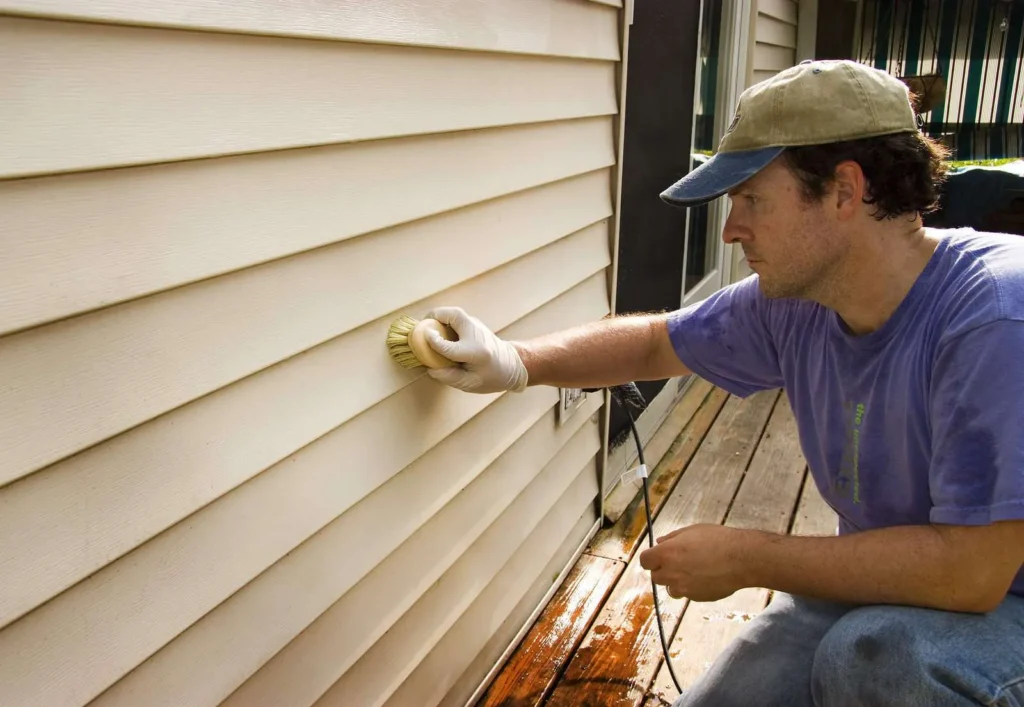Why Siding Maintenance Matters
The exterior siding of a home is its first layer of defense against the elements. Over time, exposure to sun, rain, wind, and contaminants can cause fading, staining, or deterioration. Proper siding upkeep not only preserves curb appeal but also protects the underlying structure. Using resources like windows & siding outlet can help homeowners learn about specific maintenance requirements for their siding type. A well-maintained exterior reduces costly repairs, improves insulation, and positively impacts your property’s resale value. Routine tasks like cleaning, caulking, and timely repainting or sealing can significantly affect longevity. Staying proactive with maintenance ensures your home remains beautiful and structurally sound for years.
Types of Siding and Their Care Needs
Different siding materials have unique strengths—and unique cleaning considerations. Vinyl siding is durable and relatively low-maintenance, though it may accumulate mildew or algae in shady areas. Fiber cement needs gentle cleaning to protect painted surfaces, while wood siding may require more frequent inspection for pests and moisture. Metal, stone, and brick exteriors have tailored cleaning protocols to avoid surface corrosion or mortar damage. Following manufacturer guidelines is important to prevent accidental wear or voiding warranties.
Essential Tools and Supplies
Maintaining most types of siding doesn’t require special equipment. A garden hose with a spray nozzle, soft-bristle brush, bucket, and mild detergent are usually all needed. Avoid abrasive scrubbers or harsh chemicals, which can damage finishes or loosen seals. Sturdy ladders or extension poles can help reach higher sections safely for multi-level homes. Proper attire—such as gloves and protective glasses—is recommended for dealing with detergents or debris. For problematic areas and stubborn stains, a diluted vinegar solution or approved siding cleaner can be helpful.
Step-by-Step Cleaning Process
Begin by rinsing loose dirt and debris from top to bottom, as this prevents streaks. Mix a mild soap solution or use a specialty cleaner based on your siding material. Use a soft brush or cloth to gently scrub each section, shifting to extra attention near downspouts and under eaves where grime builds up. Periodically rinse away soap residue with clean water. For tough mildew or algae, a solution of one part vinegar to three parts water can help break down stains without harming plants. Pressure washers can be effective but should be used cautiously—maintain a low setting and keep the stream moving to avoid water intrusion or surface damage.
Preventing Damage and Common Mistakes
The urge to deep-clean with high-pressure or abrasive tools can backfire, leading to cracked panels or water entering the wall assembly. Always test cleaning solutions on a small, hidden area before applying them widely. Avoid aiming sprayers upward, as this can force moisture behind the siding. Never use bleach unless specified by your siding manufacturer, as it can strip protective coatings and harm landscaping. Secure loose panels or repair caulking immediately to prevent moisture and pests from entering the home’s envelope.
Periodic Inspections and Maintenance Tips
Spring and fall are ideal times to inspect your siding for damage, discoloration, or areas needing touch-ups. Remove vines and shrubs that may trap moisture against the surface. Check for peeling paint, especially on wood or fiber cement, and spot-treat mold or mildew as needed. Caulking and weatherstripping around windows and doors should be refreshed when gaps appear. A regular visual check is one of the most effective ways to catch small issues before they escalate.
Enhancing Longevity with Best Practices
Thoughtful, gentle cleaning and annual inspections help most siding materials perform at their best for decades. Match original materials and finishes to preserve appearance and warranty coverage when updating or replacing sections. Consult your siding manufacturer’s recommendations and maintain records of repairs and cleaning routines. This documentation can be invaluable for warranty claims and reassuring future buyers of the home’s upkeep. Consistency in care also helps identify potential issues early, preventing minor problems from turning into major damage.



